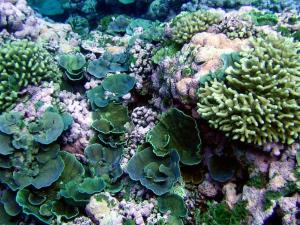Tool
Coral Reef Watch
This site offers near-real-time products based on satellite, in situ, and modeled data to help managers prepare for and respond to environmental stress to coral reef ecosystems, especially heat stress.
Available tools and products help people:
- monitor and predict environmental conditions leading to coral bleaching events and disease outbreaks;
- compile bleaching risk assessments and preparation, implementation, and communication of timely, effective protective responses and adaptation actions;
- assess spatial extent of reef areas affected by prolonged high ocean temperatures or land-based sources of pollution; and
- identify coral reefs resilient to climate change for long-term conservation and marine spatial planning.
Details
Sources
NOAA Coral Reef Conservation Program
NOAA / NESDIS / Center for Satellite Applications and Research and Office of Satellite and Product Operations
NOAA National Weather Service—Climate Prediction Center
NOAA | National Centers for Environmental Prediction
NOAA Climate Program Office
Universidad Nacional Autónoma de México
University of Queensland
University of Exeter
Global Environmental Facility
Australian Research Council
James Cook University
Australian Institute of Marine Science


